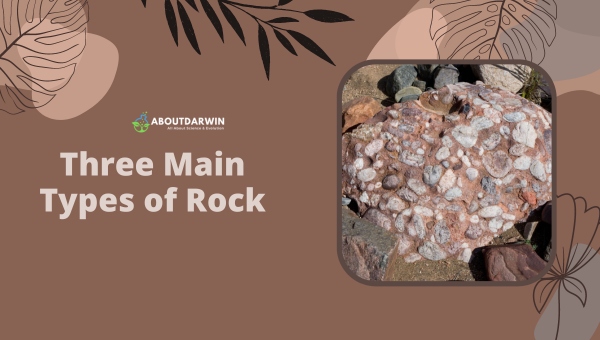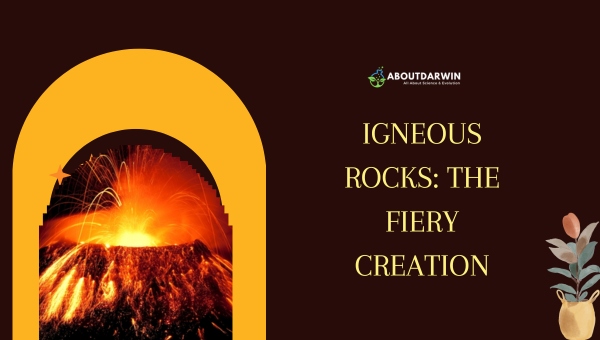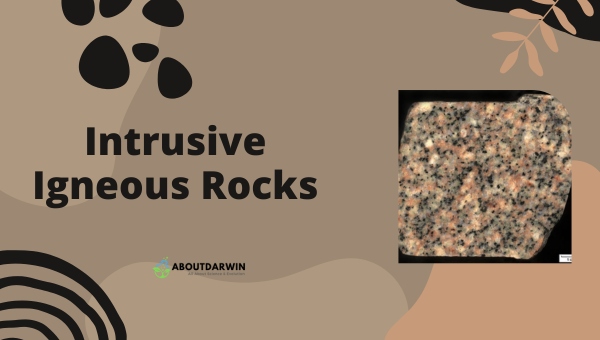Physical Address
304 North Cardinal St.
Dorchester Center, MA 02124
Curious about the 3 types of rocks that make up our Earth’s crust? Well, you’ve come to the right place! Here you will get to know about the basics of these rock types and why they’re so essential to understanding our planet’s geology.
In our exploration, we’ll examine igneous, sedimentary, and metamorphic rocks, which have distinct differences in their formation processes and characteristics.
By learning about how these rocks are created and transformed, we can better comprehend Earth’s dynamic structure and the fascinating science behind it.
Contents
Understanding the different types of rocks is important for geologists, as it provides valuable insights into the Earth’s history, formation, and structure.

It also has practical applications in industries such as construction, mining, and energy production. By studying rocks, we can learn more about the natural world and how it has evolved over time.

Diving into the world of rocks, it’s essential to explore the fascinating realm of igneous rocks. Known as the fiery creation, they form when molten materials, such as magma and lava, cool down and solidify. There are two primary types of igneous rocks I’d like to discuss: intrusive and extrusive.
Formed beneath the Earth’s surface, intrusive igneous rocks result from the slow cooling of magma.

Since the cooling process takes longer, the crystals within these rocks have ample time to grow larger, resulting in a coarse-grained texture. Some examples of intrusive igneous rocks include:
In contrast to their intrusive counterparts, extrusive igneous rocks form when lava cools rapidly on the Earth’s surface. This speedy cooling process doesn’t allow the crystals enough time to grow, yielding a fine-grained, smooth texture. Here are some common examples of extrusive igneous rocks:
The formation process of igneous rocks showcases the beauty of Earth’s ever-changing landscape. As you explore these rocks, remember that their creation begins from incredibly hot, molten materials, solidifying into the solid structures we can observe and appreciate today.
Sedimentary rocks play a significant role in understanding Earth’s history. They’re formed from the accumulation of remnants of other rocks, minerals, and organic material over time. There are three main categories of sedimentary rocks: clastic, chemical, and organic.
I. Clastic sedimentary rocks are created when other rocks are broken down into small pieces, or clasts, by erosion and weathering. These clasts are then transported and deposited in new locations, eventually solidifying and forming new rocks. Examples of clastic sedimentary rocks include:
II. On the other hand, we have chemical sedimentary rocks. They form when minerals dissolved in water precipitate, or separate, out of the water solution and accumulate. The process is driven by either evaporation or chemical reactions. Well-known chemical sedimentary rocks are:
III. Finally, there are organic sedimentary rocks. These rocks form from the remains of once-living organisms, such as plants and animals. As these organisms die and decay, they leave behind materials that become incorporated into the rock formation process. Some common organic sedimentary rocks include:
An essential aspect of sedimentary rocks is their distinct layers or strata. These strata reflect changes in the environment, revealing valuable information about events and conditions at the time of their deposition. Thanks to these layers, we can learn about past climates, ecosystems, and even the movements of Earth’s tectonic plates.
| Type | Example |
|---|---|
| Clastic | Sandstone |
| Chemical | Rock salt |
| Organic | Coal |
The formation of sedimentary rocks through lithification is a process that involves compaction and cementation. When sediments accumulate, they exert pressure on the layers below, causing the particles to compact. Next, minerals carried by water fill spaces between the particles, acting as a natural glue to cement the layers together.
However, it’s important to note that not all sediments become sedimentary rocks. The process can be disrupted or incomplete due to various factors, such as erosion or a lack of cementing agents.
Sedimentary rocks are geological marvels that provide us with crucial information about the Earth’s past. Their diverse categories—clastic, chemical, and organic—originate from different sources, and the layers within these rocks act as windows into the history of our planet.
Metamorphic rocks represent a unique and intriguing transformation process that takes place in our planet’s geologic history. These rocks originate from igneous, sedimentary, or even other metamorphic rocks that have undergone significant changes due to high pressure, high temperature, or chemically active fluids.
During metamorphism, the parent rock, also known as the protolith, is subjected to various earth processes that cause its minerals and textures to change. Some factors that trigger this transformation include:
Metamorphic rocks are typically classified into two main types based on their texture: foliated and non-foliated.
| Type | Texture | Examples |
|---|---|---|
| Foliated | Layered appearance | Slate, schist, and gneiss |
| Non-foliated | Dense and compact | Marble, quartzite, and hornfels |
Foliated metamorphic rocks display a distinct layering resulting from the alignment of their mineral grains under pressure. Some common foliated rocks are:
On the other hand, non-foliated rocks have a more massive and compact appearance without visible layers. A few noteworthy non-foliated examples include:
The myriad forms of metamorphic rocks showcase the dynamic nature of Earth’s geologic processes. By understanding these transformations, we can appreciate the ever-changing landscape beneath our feet and the incredible forces that shape our planet.
“Have you ever wondered how rocks are formed and where they come from? The answer lies in the rock cycle – a continuous process that shapes and reshapes the Earth’s surface.”
The rock cycle is a fundamental geologic process that involves the transformation of one type of rock into another. It is a continuous process that occurs over a long period of time and is driven by the natural forces of weathering, erosion, deposition, compaction, and cementation.
The rock cycle process is complex but can be broken down into a few key steps:
The rock cycle plays a vital role in Earth’s geology. It has some important implications for the environment, including:
We hope that this blog post has helped you understand the three main types of rocks: Igneous, Sedimentary, and Metamorphic.
Each type of rock is unique and has its own characteristics, formation processes, and practical applications. Studying these rocks is important for geologists to understand the Earth’s history, structure, and resources. It also has practical applications in the construction, mining, and energy production industries.
We appreciate your interest in learning about geology and rocks. We hope that you found this blog post informative and engaging. Thank you for reading!